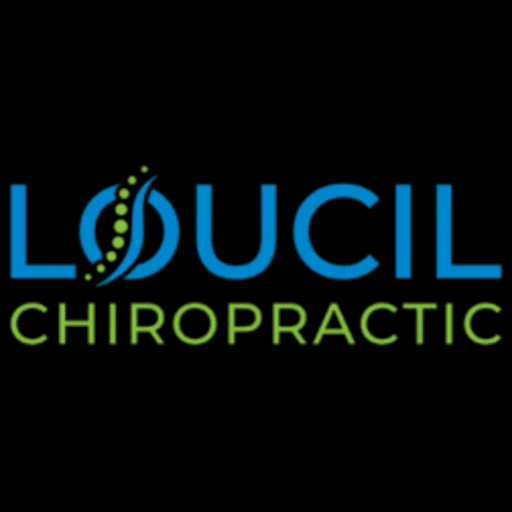
A car accident can leave you grappling with whiplash, a neck injury caused by a sudden jolt that strains the muscles, ligaments, and tendons of the cervical spine. This condition, often linked to rear-end collisions, can result in persistent pain, stiffness, and other symptoms that disrupt daily life. Addressing whiplash promptly with physical therapy for whiplash and complementary treatments like chiropractic care can significantly improve your recovery.
This guide from Loucil Chiropractic provides a detailed look at whiplash, its effects on the body, and how structured therapies can help you regain mobility and comfort. You’ll gain insight into:
- The mechanics and causes of whiplash injuries
- How physical therapy and chiropractic care support healing
- Practical strategies for managing pain and preventing future issues
With the right approach, you can navigate the whiplash recovery processand return to your normal activities.
What Is Whiplash?
Defining Whiplash
Whiplash occurs when the neck undergoes a rapid, forceful back-and-forth motion, similar to the crack of a whip. This sudden movement strains the soft tissues of the cervical spine, including muscles, ligaments, and tendons. The term whiplash-associated disorders (WAD) encompasses a spectrum of symptoms, ranging from mild discomfort to chronic pain or neurological complications.
If whiplash remains untreated, it can lead to prolonged discomfort, reduced mobility, or even neurological issues, emphasizing the need for early intervention to prevent lasting damage.
Causes of Whiplash
Whiplash is most frequently caused by rear-end car accidents, where the head and neck jolting forces the neck into hyperextension and hyperflexion. Other causes include sports injuries, falls, or physical trauma that results in abrupt neck movement. In Ives Estates, whiplash commonly occurs after local traffic collisions or athletic activities that involve sudden impact. The mechanics of whiplash involve the neck extending backward beyond its normal range, followed by a forward snap, which can stress or damage the cervical vertebrae and surrounding tissues. Understanding these causes helps clarify why timely treatment is essential to address the injury effectively.
How Whiplash Affects the Body
Neck and Cervical Spine Strain
The cervical spine, made up of seven vertebrae, bears the brunt of the force in a whiplash injury. This force strains muscles, ligaments, and tendons, often resulting in a neck sprain. In severe cases, the impact of a car crash may affect the spinal cord, leading to more serious complications.
The sudden motion disrupts the spine’s natural alignment, causing inflammation and pain that may extend to the shoulders, upper back, or arms. This strain can limit movement and affect daily tasks if not addressed properly.
Injury Severity
Whiplash injuries vary widely in severity. Mild cases may involve temporary neck stiffness or minor discomfort, resolving within weeks with proper care. More severe cases can lead to chronic pain or long-term symptoms, including neurological or psychological effects like somatization, memory problems, or fatigue.
In some instances, whiplash symptoms may be mistaken for other conditions, such as tension headaches, rotator cuff injuries, or even cervical disc problems. This overlap highlights the need for a precise medical evaluation to distinguish whiplash from similar conditions and ensure appropriate treatment.
Symptoms and Diagnosis of Whiplash Injury

Common Symptoms
Symptoms of whiplash injury typically emerge within 24-48 hours after an accident. These may include neck pain, headaches starting at the base of the skull, dizziness, blurred vision, and numbness or tingling (paresthesia) in the arms.
Additional symptoms, such as shoulder pain, muscle spasms, or difficulty concentrating, are also common. Whiplash-associated disorders (WAD) can lead to more complex issues, like sleep disturbances or persistent fatigue, particularly in moderate to severe cases. Recognizing these symptoms early is key to seeking timely care.
Diagnostic Process
To confirm diagnosing whiplash, healthcare providers conduct a thorough physical examination, assessing range of motion, tenderness, and muscle strength. They may also evaluate for signs of nerve damage or spinal cord injury following a car crash. Imaging tests, such as X-rays, MRI, or CT scan, help rule out fractures or significant tissue damage.
Proving a whiplash injury often involves gathering evidence needed for whiplash, including medical records, imaging results, and a detailed account of the accident. This documentation helps differentiate whiplash from conditions with similar symptoms, such as cervical strains or disc issues, ensuring an accurate diagnosis.
Physical Therapy for Whiplash: How Can It Help?
Benefits of Physical Therapy
Physical therapy after a car crash for neck pain plays a central role in the whiplash recovery process. It focuses on pain relief for whiplash, restoring neck mobility, and strengthening the muscles that support the spine. By reducing inflammation and improving blood flow, physical therapy helps promote healing and manage pain, preventing chronic complications.
The recovery process typically progresses through four phases: acute (immediate pain relief), subacute (restoring mobility), rehabilitation (strengthening), and maintenance (preventing re-injury). Each phase is tailored to address specific symptoms and goals, ensuring a structured path to recovery.
Acute Injury Treatment
For acute whiplash, which typically lasts 2-3 months, physical therapists employ techniques like cold therapy for whiplash to reduce swelling, heat therapy for neck pain to relax tight muscles, and manual therapy for whiplash to gently mobilize the neck.
These approaches help manage managing whiplash pain and support early healing. In some cases, therapists may recommend a cervical collar (C-collar) for short-term stabilization, though prolonged use is avoided to prevent muscle weakening.
Chronic Injury Treatment
When symptoms persist beyond 12 weeks, indicating chronic whiplash, therapists may use advanced treatments like radiofrequency neurotomy to target nerve-related pain or TENS (Transcutaneous Electrical Nerve Stimulation) to alleviate discomfort.
Strengthening exercises, such as core strengthening exercises, are introduced to support the spine and reduce the risk of further injury. Lifestyle changes, such as adopting ergonomic workstations or avoiding prolonged static postures, also play a significant role in managing chronic symptoms and supporting long-term recovery.
Whiplash Physical Therapy Protocols

Initial Assessment
The first step in physical therapy for whiplash in Miami Gardens is a comprehensive assessment. Your therapist reviews your medical history, evaluates symptoms, and may use imaging to gauge the injury’s severity.
This process considers factors like prior injuries, lifestyle, and psychosocial elements that could influence recovery. The assessment ensures that the treatment plan is tailored to your specific needs, addressing both immediate symptoms and long-term goals.
Personalized Treatment Plans
Every whiplash injury is unique, requiring a customized approach. Your therapist designs a plan based on the injury’s severity, your health history, and daily activities. Treatments may include ultrasound therapy to promote tissue healing, deep tissue massage to relieve muscle tension, or exercise therapy to restore strength and flexibility.
The number of physical therapy sessions varies, with most patients needing 6-12 sessions over 2-12 weeks for mild to moderate cases. Severe injuries may require extended care, potentially spanning several months, depending on progress and adherence to the plan.
Common Physical Therapy Exercises
Effective neck recovery exercises include:
- Serratus Wall Slide : Strengthens shoulder and upper back muscles to support the neck muscles, reducing strain on the cervical spine.
- Chin Tuck: Aligns the head with the spine, improving posture and relieving neck tension.
- Levator Release with a Ball: Targets tight muscles in the upper neck, promoting relaxation and flexibility.
Therapists use a mix of active vs. passive treatments. Passive treatments, like manual therapy, provide immediate relief, while active treatments, such as stretching exercises, build strength and resilience over time. Incorporating lifestyle changes, such as maintaining a neutral neck position during sleep or using supportive pillows, can further enhance the effectiveness of these exercises.
Long-Term Rehabilitation for Whiplash
Preventing Re-injury
Re-injury prevention is a critical component of lasting recovery. Restorative exercises strengthen the neck and core muscles, improving stability and flexibility. Regular stretching exercises maintain range of motion, making the neck less prone to future injuries.
Lifestyle adjustments, such as using ergonomic chairs, taking breaks during prolonged sitting, or avoiding activities that strain the neck, like excessive phone use, can significantly reduce the risk of re-injury. These changes support the body’s ability to withstand stress and maintain long-term health.
Managing Chronic Pain
For those experiencing chronic pain, a combination of physical therapy, chiropractic adjustments for whiplash, and targeted lifestyle changes can provide relief. Techniques like acupuncture or TENS offer additional pain relief management, while education on proper posture and ergonomics helps sustain progress.
For example, adjusting your computer monitor to eye level or using a standing desk can minimize strain on the neck, supporting recovery and preventing symptom recurrence.
Duration of Physical Therapy for Whiplash
Recovery Timeline
The average recovery time for whiplash depends on the injury’s severity. Mild cases typically resolve within 2-4 weeks with consistent therapy, while moderate cases may take up to 3 months. Severe cases, particularly those involving whiplash-associated disorders (WAD), can require 6 months to over a year.
On average, most people stay in physical therapy for 6-12 sessions, though severe injuries may necessitate ongoing care for several months to achieve full recovery.
Factors Affecting Recovery
Several factors influence the recovery timeline, including the injury’s severity, previous neck injuries, and adherence to the therapy plan. Patients who actively participate in their prescribed exercises and follow lifestyle recommendations tend to recover faster.
Additionally, underlying health conditions or delayed treatment can extend recovery time, highlighting the importance of addressing whiplash promptly to avoid complications.
Preventing Re-injury with Physical Therapy

Strengthening and Flexibility
Physical therapy strengthens the neck and core muscles, enhancing stability and reducing the likelihood of future injuries. Regular stretching exercises improve flexibility, allowing the neck to better absorb stress from sudden movements.
These exercises, combined with consistent practice, create a strong foundation for long-term neck health.
Postural Guidance
Posture improvement is essential for protecting the neck. Therapists provide guidance on ergonomic setups, such as adjusting chair height or positioning computer screens to reduce strain. Simple changes, like keeping your shoulders relaxed while typing or using a headset for phone calls, can make a significant difference in preventing re-injury.
Core Strengthening
Core strengthening exercises stabilize the spine, reducing the load on the cervical spine. A strong core supports proper alignment, helping the body maintain balance during daily activities or unexpected movements. Incorporating exercises like planks or pelvic tilts into your routine can enhance spinal stability and protect against future whiplash injuries.
Chiropractic Care for Whiplash
Chiropractic Adjustments
Chiropractic treatment for neck injuries involves precise spinal manipulation for whiplash to realign the cervical vertebrae. These adjustments relieve pressure on nerves, reduce muscle spasms, and improve joint mobility. By restoring proper alignment, chiropractic care supports the body’s natural healing processes, offering relief from pain and stiffness.
Benefits of Chiropractic Care
Chiropractic adjustments for whiplash enhance blood flow, reduce inflammation, and promote faster healing. These adjustments address misalignments in the spine that may contribute to pain or restricted movement. When combined with physical therapy, chiropractic care provides a comprehensive approach, tackling both the symptoms and structural causes of whiplash.
Chiropractic and Physical Therapy Comparison
Physical therapy focuses on strengthening muscles and restoring mobility, while chiropractic care emphasizes spinal alignment. Together, these treatments complement each other, addressing both the functional and structural aspects of whiplash recovery. For example, physical therapy may improve muscle strength, while chiropractic adjustments ensure the spine remains properly aligned, creating a balanced approach to healing.
When to Seek Medical Help for Whiplash
Signs Requiring Attention
Seek medical attention if you experience severe neck pain, persistent headaches, numbness, tingling, or muscle weakness. These symptoms may indicate nerve damage or whiplash-associated disorders (WAD), requiring prompt evaluation. Additionally, symptoms like blurred vision, difficulty concentrating, or memory issues could suggest a more serious condition, such as a concussion, that needs immediate attention.
Emergency Care
Immediate care is critical for signs of spinal cord injury, such as severe pain, loss of sensation, or suspected fractures. Visit a hospital or consult neck pain specialists in Miami Gardens to ensure proper diagnosis and treatment. Documenting symptoms, medical evaluations, and accident details is also important for establishing evidence needed for whiplash, particularly for medical or insurance purposes. Early intervention helps prevent complications and supports a smoother recovery.
Specialized Care for Whiplash Recovery
For those seeking whiplash treatment in Ives Estates or whiplash treatment in Miami Gardens, professional care can make a significant difference. Loucil Chiropractic, located at 1001 Ives Dairy Rd Suite 206, Miami, FL, offers specialized treatments tailored to your needs. Their team, led by Dr. Loucil, provides chiropractic care, spinal decompression, and laser therapy to support recovery.
Why Choose Loucil Chiropractic for Whiplash Recovery

Choosing the right clinic after a car accident is crucial for a complete and lasting recovery. At Loucil Chiropractic, we specialize in evidence-based care for whiplash and neck injuries, combining physical therapy and chiropractic techniques to restore comfort, strength, and mobility. Here’s why patients in Ives Estates and Miami Gardens trust us for whiplash recovery:
- Specialized Expertise in Whiplash and Car Accident Injuries:
Led by Dr. Loucil, our clinic has extensive experience managing whiplash-associated disorders and post-accident neck pain with targeted chiropractic and rehabilitation care. - Integrated Physical Therapy and Chiropractic Care:
We combine therapeutic exercise, manual therapy, spinal decompression, and gentle cervical adjustments to address both the muscular and structural aspects of whiplash. - Personalized, Evidence-Based Treatment Plans:
Each patient receives a customized care plan designed around their injury severity, mobility level, and recovery goals to ensure faster and more effective healing. - Advanced Rehabilitation Techniques:
Our treatments include modalities such as ultrasound therapy, deep tissue massage, and posture correction to reduce pain, restore range of motion, and prevent re-injury. - Patient-Centered, Comfortable Care:
We prioritize gentle, low-force techniques and clear communication throughout your recovery to make every session safe, effective, and comfortable. - Same-Day and Flexible Appointments:
We understand that pain cannot wait, especially after a car crash. Our clinic offers same-day availability for whiplash and neck pain treatment in both Ives Estates and Miami Gardens. - Affordable and Transparent Pricing:
Our pricing is straightforward and accessible, with no hidden fees, making high-quality rehabilitation care available to every patient. - Proven Track Record of Success in treating whiplash and managing neck pain:
With over eight years of experience and thousands of satisfied patients, we have built a trusted reputation for delivering long-term relief and improved mobility.
FAQ'S About "Whiplash Recovery"
Physical therapy, chiropractic care, and manual therapy are highly effective for whiplash treatment. Techniques like cold therapy, heat therapy, and stretching exercises reduce pain and restore mobility.
Advanced options, such as TENS or radiofrequency neurotomy, may help with chronic cases.
Recovery time for whiplash depends on the severity of the injury and the effectiveness of pain management strategies.
Mild cases may heal in 2-4 weeks, moderate cases take up to 3 months, and severe cases can require 6 months or more with consistent physical therapy.
Yes, chiropractic adjustments for whiplash realign the cervical spine, reduce muscle spasms, and improve circulation, complementing physical therapy for faster recovery.
Consult a doctor if you experience severe neck pain, numbness, dizziness, or blurred vision after an accident.
Prompt evaluation ensures proper diagnosing whiplash and treatment.
Yes, Untreated whiplash can lead to chronic pain, reduced range of motion, or whiplash-associated disorders (WAD), such as memory problems or fatigue.
Early intervention prevents complications.
Physical therapy for whiplash typically lasts 2-12 weeks for mild to moderate cases.
Severe injuries may require 6 months or more, depending on adherence and injury complexity.
Untreated whiplash after a car accident can result in chronic whiplash, persistent neck pain, or neurological issues like tingling or dizziness.
Early physical therapy and chiropractic care reduce these risks.

Dr. Loucil is a dedicated chiropractor and the founder of Loucil Chiro, offering compassionate, expert care focused on long-term wellness. With years of hands-on experience, he helps patients relieve pain, improve posture, and restore natural movement without drugs or surgery. His personalized chiropractic approach treats the root cause, not just the symptoms. At Loucil Chiro, Dr. Loucil creates a supportive, healing environment where patients feel heard and empowered. Whether you’re managing back pain, neck stiffness, or everyday stress, he’s here to help you live a healthier, more balanced life, one adjustment at a time.
